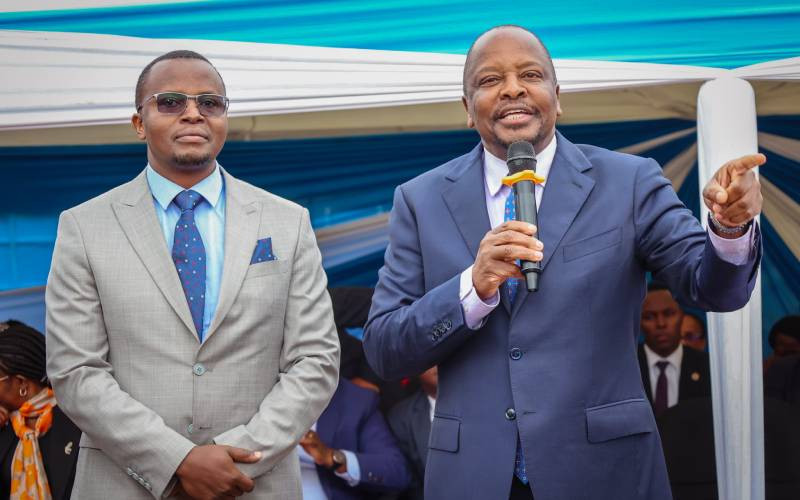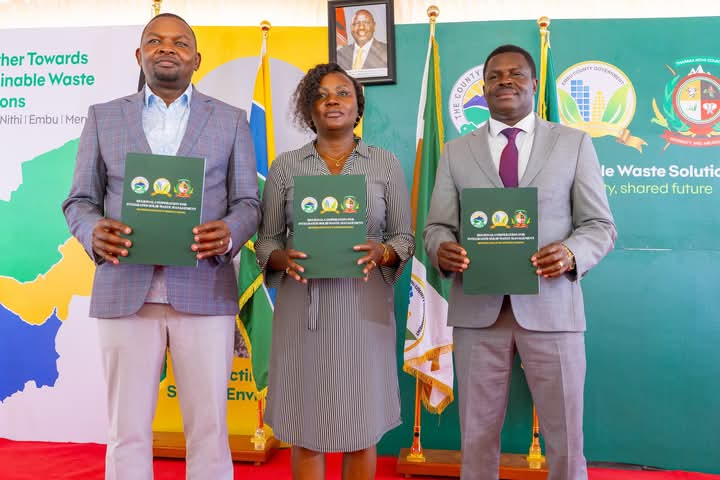The national government through the Ministry of Agriculture has unveiled a nationwide rollout of milk cooling equipment aimed at transforming Kenya’s dairy industry, tackling post-harvest losses, and enhancing farmer incomes.
The initiative, valued at ksh1.45 billion, was officially launched last month by President William Ruto in Meru County.
In the first phase, 15 milk coolers was delivered to farmer-owned cooperatives, with an additional eight have been flagged off today in Nyeri by Agriculture Cabinet Secretary Mutahi Kagwe.
The programme targeting 230 coolers across 40 counties, falls under the Livestock Value Chain Support Project, aligned to the government’s Bottom-Up Economic Transformation Agenda (BETA).
ALSO READ:
Leaders promise to address challenges affecting cooperative movement in Africa
Kagwe emphasized the initiative’s potential to help small-scale dairy farmers shift from subsistence to commercial farming. “Dairy farmers are key contributors to our national milk output. These coolers will not only improve storage and quality but also raise incomes through better market access,” he stated.
According to the ministry, the new coolers will raise Kenya’s milk chilling capacity by 475,000 litres daily, a timely boost considering the country loses an estimated 175 million litres of milk annually due to poor post-harvest handling, costing about Sh7.9 billion.
To address challenges in processing, the government has pledged investment in both public and private milk processors, aiming to expand local market absorption and increase exports.
With over two million Kenyans relying on the dairy sector and the industry contributing approximately 4% to GDP, the government is now setting ambitious targets.
ALSO READ:
NCPB on spot as Audit uncovers fake firms, unsafe inputs and billions lost in fertilizer subsidy
By 2027, it projects a doubling of milk output to 10 billion litres, creation of 500,000 new jobs, and export of 1 billion litres annually, while optimizing at least 70% of existing processing capacity.
However, Kagwe acknowledged that realizing these goals would require confronting several challenges, from low productivity and inadequate breeding stock to poor feeding practices, climate change, and livestock diseases.
The government also plans to lease idle public land for large-scale fodder, sunflower, and essential crop production. These will help bring down feed costs and enhance nutritional value for livestock.
“We must adopt practical and viable interventions to transform the dairy sector,” Kagwe urged. He highlighted the importance of pasture commercialization, the use of sexed semen for quality breeding, and a nationwide vaccination drive to elevate product standards and meet global trade requirements. The rollout of milk coolers has been widely welcomed as a practical and strategic boost for the dairy sector by farmers.
By Masaki Enock
Get more stories from our website: Sacco Review.
For comments and clarifications, write to: Saccoreview@
Kindly follow us via our social media pages on Facebook: Sacco Review Newspaper for timely updates
Stay ahead of the pack! Grab the latest Sacco Review newspaper!



